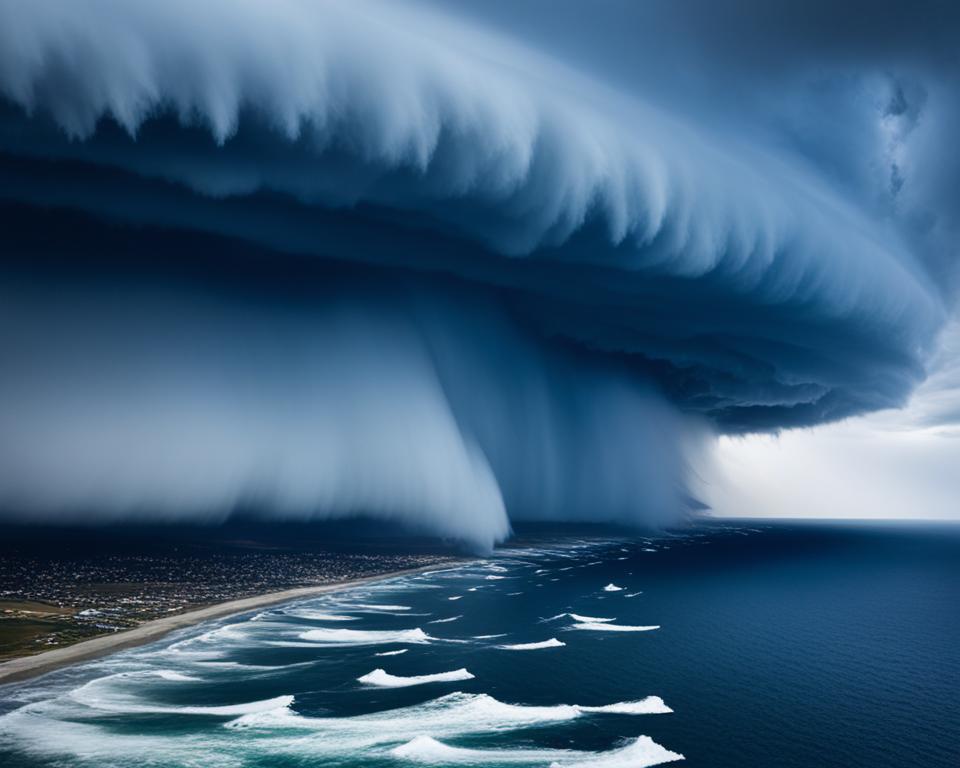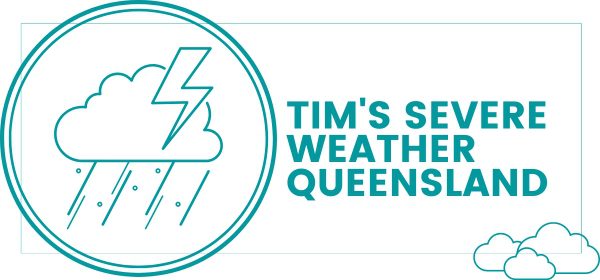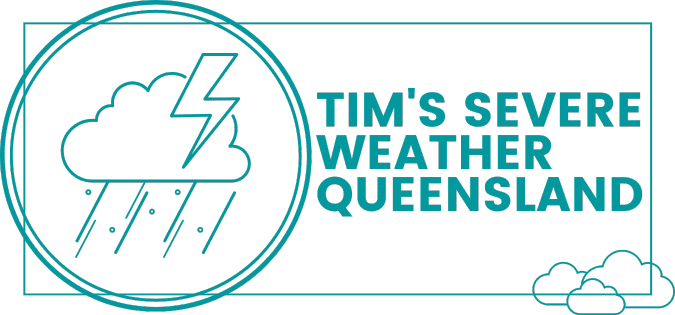Table of Contents
Have you ever wondered what communities along Australia’s eastern coastline dread more: tropical cyclones or East Coast Lows? Both are formidable meteorological phenomena, but East Coast Lows (ECLs) stand out due to their unpredictable and rapid intensification. These extreme weather events in Australia impact southern Queensland, New South Wales, and eastern Victoria with devastating power.
Characterised by intense low-pressure systems, ECLs bring destructive winds, torrential rain, and rough seas, leading to severe weather events. The infamous December 1998 Sydney to Hobart race, which tragically claimed six lives and led to the sinking of five yachts, is a stark reminder of the peril these storms pose. Even more alarming, the February 2020 ECL delivered 392 mm of rain over four days, resulting in more than $45 million in insurance claims and widespread power outages for over 110,000 homes and businesses.
Such meteorological phenomena can strike at any time but are most frequent during autumn and winter, particularly in June. The Australian Bureau of Meteorology continues to monitor these systems rigorously, as their rapid intensification combined with erratic behaviour makes them one of Australia’s most treacherous coastal dangers.
The increasing frequency of severe weather events in Australia raises pressing questions about the role of climate change in amplifying these occurrences. According to the New South Wales Government’s climate modelling, extreme East Coast Lows are expected to increase in warmer months but show little change during the cooler seasons. This evolving pattern underscores the urgency to understand and prepare for these potent and potentially deadly meteorological phenomena.
What is an East Coast Low?
East Coast Lows (ECLs) are intense low-pressure systems that form off the eastern coast of Australia. These weather phenomena are known for their sudden and explosive development, often leading to severe coastal storms Australia. Primarily impacting the regions of southern Queensland, New South Wales, and eastern Victoria, ECLs are significant players in east coast weather patterns. These systems are more common during late autumn and winter, with their peak occurring in June.
Definition and Characteristics
An East Coast Low is characterized by its relatively short lifespan, often lasting only a few days compared to tropical cyclones that can persist for a week or longer. Despite their brevity, ECLs can produce potent wind gusts reaching speeds of up to 165 km/h, almost matching the intensity of a Category 3 tropical cyclone. Additionally, these systems account for more than half of all days with rainfall exceeding 50 mm in southeastern Australia and contribute to over 25% of the yearly rainfall, particularly during crucial seasons.
While some ECLs are hybrid cyclones featuring warm cores at lower levels and cold cores at upper levels, others may form rapidly within pre-existing troughs of low pressure or as ex-tropical cyclones. This ability to form quickly and intensely makes them particularly hazardous. On average, East Coast weather patterns include about 22 ECL events annually, with 2 to 3 events causing daily rainfall surpassing 100 mm.
Historical Incidents
ECLs have a storied history of causing significant maritime disasters, property damage, and loss of life. For instance, the Pasha Bulker bulk carrier was grounded off Nobby’s Beach near Newcastle, NSW, during an ECL in June 2007. The destructive winds, torrential rainfall, and rough seas associated with stronger ECLs have led to numerous such incidents.
In terms of frequency, east coast lows happen several times each year, with around ten significant impact events annually. Despite this regularity, long-term data since 1973 show no clear trend in the frequency of these systems, indicating natural variability in their occurrence. Notable historical ECL events include severe storms in 2022, 2021, and 2015, among others.
Regions between Batemans Bay and Coffs Harbour experience the most intense impacts, often resulting in flash flooding, the grounding of vessels, and coastal erosion. Additionally, changes in the Southern Oscillation Index (SOI) can influence the formation of ECLs, showing a preference for development following shifts from negative to positive SOI values.
The Formation of East Coast Lows
East Coast Lows (ECLs) are dynamic weather systems in Australia, forming through various atmospheric disturbances. Predominantly affecting the eastern seaboard, these powerful storms can originate from complex weather conditions, driven by a multitude of physical processes.
East Coast Low Pressure System Satellite Imagery
Weather Conditions
ECLs commonly develop through mid-latitude baroclinic processes—where sharp temperature gradients exist. The process often involves cyclogenesis, which can be initiated by transitioning tropical cyclones or within pre-existing low-pressure troughs. ECLs are notably more frequent during the cooler months, from May to August, aligning with the synoptic climate science patterns that favour their formation.
Some ECLs satisfy the Sanders and Gyakum “bomb” criterion for explosive development due to rapid intensification, challenging forecasters. The local maximum of cyclone activity over the Tasman Sea further underscores the regional propensity for these storms.

Role of Sea Surface Temperatures
Warm sea surface temperatures play an instrumental role in the development of East Coast Lows. The East Australian Current, with its warm eddies, significantly contributes to the formation and sustenance of ECLs by providing the necessary heat and moisture. These warmer waters create favourable conditions for the convection and intensification of these systems.
Real-time prediction and tracking of ECLs remain challenging, necessitating advancements in weather forecasting models to accurately pinpoint the centre’s future location, movement, and strength. Despite the complexities, understanding the intricate interplay of upper atmospheric conditions and sea surface temperatures is essential for advancing climate science and mitigating the impacts of these formidable weather systems in Australia.
Why East Coast Lows are Dangerous
East Coast Lows (ECLs) pose a significant threat to coastal communities due to their ability to generate gale or storm-force winds, widespread heavy rainfall, and very rough seas. These weather hazards on the East Coast often lead to several severe storms East Coast annually, causing major river flooding, coastal flooding in Australia, and substantial coastal damage.
The rapid intensification of ECLs makes them particularly hazardous. For instance, it is not uncommon for an East Coast Low to undergo pressure falls of 24 hPa within 24 hours, rapidly transforming into a dangerous storm system. According to statistics, ECLs occur about 22 times per year, with 2-3 events causing extreme daily rainfall exceeding 100 mm, and 7-8 events causing widespread daily rain above 25 mm.
The extreme rainfall associated with ECLs can lead to severe flooding, as witnessed in June 2016 when an ECL around Sydney resulted in over 300 mm of rainfall within a few days, causing intense flooding and coastal erosion. This illustrates the potential for significant coastal flooding in Australia during such events.
Further compounding these weather hazards on the East Coast are the violent gales produced by ECLs, which can reach near hurricane strength. Historical incidents, such as the Sydney to Hobart race in 1998, demonstrate the fatal consequences of these storms. East Coast Lows have been responsible for major flood episodes on East Coast river systems. For example, the severe flooding in eastern Victoria in June 1998 and the extensive coastal erosion of Gold Coast beaches due to severe storms in June 1967 highlight the potential devastation caused by these systems.
Moreover, future projections indicate that climate change could impact the frequency and characteristics of ECLs. While fewer East Coast Lows may occur due to increasing greenhouse gas emissions, those that do form could be more intense, exacerbating the risks associated with these already dangerous storm systems.
Differences Between East Coast Lows and Tropical Cyclones
Despite both being powerful weather systems, East Coast Lows (ECLs) and tropical cyclones exhibit distinct differences in their formation, structure, impact, and duration. Understanding these variances reveals why each presents unique challenges to Australia’s coastal regions.
Formation and Structure
Tropical cyclones typically form over warm tropical waters where sea surface temperatures exceed 26°C. They have a well-defined eye and central dense overcast, structured to produce strong, sustained winds. In contrast, East Coast Lows do not require such high sea temperatures. ECLs are intense mid-latitude cyclonic systems that can develop abruptly off the coast of southern Queensland, New South Wales, eastern Victoria, and north-eastern Tasmania, often influenced by a combination of surface and upper cyclones.
Approximately one-third of East Coast Low-related rainfall occurs in the 48 hours before the system enters the Tasman Sea. These systems are further supported by negative Indian Ocean Dipole (IOD) conditions that enhance westerly cyclonic activity. By contrast, the formation of tropical cyclones heavily relies on the complex interplay between sea surface temperatures and atmospheric instability.
Impact and Duration
While tropical cyclones have a longer life cycle and greater geographical reach, their impacts can be devastating. For instance, Cyclone Debbie in 2017 led to 76,841 insurance claims worth nearly $1.8 billion, affecting 8,500 jobs and causing $2.2 billion in economic losses across Australia. Severe tropical cyclone Veronica in 2019 resulted in $2 billion in lost revenue due to infrastructure damage and significant livestock deaths.
On the other hand, East Coast Lows have shorter lifespans but can cause equally significant disruptions. Their impromptu nature often leads to substantial coastal impacts, such as strong gusts and extreme rainfall. Events, where surface lows coincide with upper lows—occurring around 15 days yearly—, contribute to over 50% of days with widespread heavy rainfall in eastern Australia. The shorter duration of ECLs does not reduce their potency; extreme rainfall linked to these systems is most likely when both surface and upper cyclones are very strong.
Trends in cyclonic activity over the past decades show a weak decline in the frequency of deep cyclone days, but this does not diminish the threat posed by either ECLs or tropical cyclones. Both systems continue to impact the weather patterns on Australia’s East Coast significantly.
In essence, while tropical cyclones have more prolonged and broad-spectrum effects, East Coast Lows, with their intense but short-lived nature, are equally critical in understanding Australia’s cyclonic weather patterns and their implications on the coastal regions.
East Coast Lows Australia: Regional Impact
East Coast Lows have a profound effect on southern Queensland, New South Wales, and eastern Victoria. These potent weather systems result in a range of regional weather events that include severe coastal erosion, infrastructure damage, and intense rainfall leading to flooding.
An East Coast Low is characterized by a ‘closed’ system with a central lowest pressure surrounded by higher pressure. They typically form between 20°S and 40°S along the eastern Australian coast and linger within approximately 200 km of the coast for at least 12 hours. The pressure gradient of an East Coast Low is at least 4 hPa/100 km, indicating a significant drop in pressure towards the centre of the low, resulting in extreme weather phenomena.

The impacts of East Coast Lows are felt most acutely through the following channels:
- Severe coastal erosion
- Infrastructure damage
- Intense rainfall leading to flooding
- Disruptions to transportation and power
- Economic losses
- Long-term effects on local communities and ecosystems
During an East Coast Low event in 2015, highly populated areas of central NSW experienced heavy rain, gale-force winds, and damaging surf over a 48-hour period. Extreme weather phenomena associated with East Coast Lows generate very fast winds turning in a clockwise direction, contributing to significant disruptions and challenges.
Moreover, ex-tropical cyclones can transition into East Coast Lows under certain conditions, exacerbating regional weather events with intense rainfall, flooding, and destructive winds. Offshore lows, or Tasman lows, are intense low-pressure systems located further from the coast than East Coast Lows, causing dangerous marine conditions and coastal erosion.
Severe Weather Warnings are issued over land areas to alert about dangerous winds, damaging surf, abnormally high tides, and heavy rain associated with East Coast Lows. Flood Warnings and Severe Thunderstorm Warnings are also issued when necessary, providing crucial information to protect communities and properties.
Ultimately, the impacts of East Coast Lows on regional weather events across southern Queensland, New South Wales, and eastern Victoria are substantial, underlining the necessity for preparedness and understanding of these potent storms.
The Role of Climate Change in East Coast Lows
The unpredictability of East Coast Lows (ECLs) has made them a critical focus of climate change studies. Climate change and East Coast Lows interact in complex ways, and understanding these interactions is key to managing their future impact.
Predictions and Trends
Current climate models provide vital insights into how climate impacts may alter the behaviour of ECLs over time. Recent research predicts a decrease of 25% to 40% in atmospheric conditions favourable to ECL formation by the end of the century. The overall frequency of ECLs is likely to reduce, especially from May to October. Nonetheless, some models suggest a possible rise in their occurrence during the warmer months.
Despite a decline in their frequency, it is expected that intense rainfall associated with ECLs will increase by approximately 7% for each degree of global warming. While the most severe ECLs each year may not significantly increase in intensity, the overall heightened rainfall and warming sea temperatures will elevate the risks they pose.
Impact on Frequency and Intensity
Extreme weather in Australia has always been marked by variability, as illustrated by East Coast Lows. Typically, about seven to eight East Coast Lows occur annually along the Australian east coast, wreaking widespread rainfall during late autumn and winter. Yet, predictions indicate a shift, with a likely reduction in ECLs’ frequency, particularly from May to October, and a potential increase from November to April.
It’s important to note that climate variability has influenced Australian extreme rainfall significantly more than climate change has in recent years. However, factors such as higher sea levels and warming sea temperatures could impact future storm intensity. Therefore, understanding and anticipating these climate impacts is crucial for enhancing storm preparedness and risk management.
“Australia has warmed, on average, by 1.47 ± 0.24 °C since records began in 1910, with most warming occurring since 1950.”— Bureau of Meteorology
Severe Weather Events Caused by East Coast Lows
East Coast Lows (ECLs) have been responsible for some of the most significant severe weather events in Australia. These powerful systems can cause widespread damage and pose major challenges for emergency preparedness on the East Coast of Australia. Understanding their impact through case studies and their effects on communities is crucial to mitigate future risks.
Case Studies of Major Storms
One of the most notable East Coast cyclones was the June 2016 ECL, which devastated parts of New South Wales (NSW). This storm resulted in over 11,000 requests for assistance, 310 flood rescues, 17 general rescues, and tragically, two lives lost. Further consequences included damage to 600 houses and 130 businesses, with estimated costs exceeding $304 million.
Another significant event was the series of ECLs in June 2007, which included the infamous Pasha Bulker incident. These storms caused extensive flooding, massive infrastructure damage, and considerable ecological impacts. Understanding these historical incidents highlights the urgent need for improved emergency preparedness on the East Coast of Australia.
Impact on Communities
The severe weather events in Australia, especially those caused by ECLs, have profound effects on communities. On average, flooding alone costs the NSW economy around $250 million annually. The rise in average temperatures since 1910 has increased the likelihood of extreme weather events, such as heavy rainfall and storm surges, exacerbating the impacts on both urban and rural areas.
Climate change predictions suggest that tropical cyclones may occur further south in Australia, bringing more severe storms and rainfall events to northern NSW. This projection underscores the necessity for robust emergency preparedness strategies to protect vulnerable communities.
The NSW Government supports local councils in managing flood risk by developing community resilience, creating emergency plans, crafting policies, and collecting critical water-level data for issuing flood warnings. Concurrently, research on East Coast cyclones and flash flooding aims to generate local data pivotal for strategic planning.
Ultimately, improving emergency preparedness in East Coast Australia hinges on learning from past severe weather events and implementing a multifaceted approach to safeguard communities against future East Coast lows.
Emergency Preparedness for East Coast Lows
Preparing for East Coast Lows in Australia demands comprehensive strategies encompassing community education, effective communication, and robust infrastructure. Leveraging over 140 reports from the NCCARF on climate change adaptation, local governments can equip communities with the knowledge and tools to handle these natural disasters effectively. The portfolio of twelve Policy Guidance Briefs by NCCARF in 2012–13 offers critical insights on climate change adaptation that can be applied to enhance preparedness.
Ensuring the availability of adequate emergency resources is paramount. The establishment of evacuation centres, as seen during the intense East Coast Low in June 2016, underscores the importance of readiness. Improved storm tracking technology facilitates timely updates and alerts, enabling residents to take necessary precautions against extreme weather patterns. South-eastern Australia, experiencing frequent high-fire risk days, benefits from such advanced tracking systems to mitigate risks.
Local support networks play a vital role in emergency preparedness. The collaboration between various committees and agencies like the NSW SES demonstrates how coordinated efforts can provide disaster welfare assistance and financial support for affected communities. Recovery initiatives such as the NSW Disaster Relief Grants and the Disaster Recovery Allowance further bolster community resilience. The future projections indicating increased frequency and intensity of heat waves, alongside uncertainties in sea-level rise due to ice melt, compel ongoing adaptation and preparedness measures.
FAQ
Q: What is an East Coast Low?
A: An East Coast Low (ECL) is an intense low-pressure system occurring off the eastern coast of Australia, primarily affecting southern Queensland, New South Wales, and eastern Victoria. These systems are characterised by destructive winds, torrential rainfall, and rough seas.
Q: When do East Coast Lows most commonly occur?
A: East Coast Lows can form at any time of the year but are most prevalent during autumn and winter, with June being particularly susceptible.
Q: What weather conditions contribute to the formation of East Coast Lows?
A: ECLs can originate from the decay and southward movement of ex-tropical cyclones or within pre-existing troughs of low pressure due to favourable upper atmospheric conditions alongside warm sea surface temperatures.
Q: How do sea surface temperatures affect the formation of East Coast Lows?
A: Warm sea surface temperatures, particularly those from the East Australian Current and its warm eddies, significantly contribute to the development of East Coast Lows.
Q: Why are East Coast Lows considered dangerous?
A: East Coast Lows are considered dangerous due to their capacity to generate gale or storm-force winds, widespread heavy rainfall, and very rough seas, leading to major river flooding, coastal damage, and loss of life.
Q: How do East Coast Lows differ from Tropical Cyclones?
A: While tropical cyclones form over warm tropical waters with sea surface temperatures above 26°C and have distinct structures and longer life cycles, East Coast Lows do not require such high sea temperatures and have much shorter lifespans. Despite having lower maximum wind speeds than severe tropical cyclones, ECLs can produce comparably powerful gales and significant rainfall.
Q: What is the regional impact of East Coast Lows in Australia?
A: ECLs have a profound effect on regions of southern Queensland, New South Wales, and eastern Victoria, leading to severe coastal erosion, infrastructure damage, flooding, and disruptions such as transportation setbacks and power outages.
Q: How does climate change impact East Coast Lows?
A: Climate projections suggest that while the frequency of East Coast Lows may decrease over time, their intensity could increase, with severe events becoming more destructive. Climate conditions such as El Niño and La Niña also influence their occurrence.
Q: Can you provide examples of major storms caused by East Coast Lows?
A: Significant storms include the ECLs in June 2007, leading to the infamous grounding of the Pasha Bulker near Newcastle and causing widespread flooding, infrastructure damage, and tragic loss of life.
Q: How can communities prepare for East Coast Lows?
A: Emergency preparedness for East Coast Lows involves community education, effective communication, improved resilience, and adequate emergency resources. Emphasising local support networks and ensuring robust storm tracking technology are also crucial for community safety.
Source Links
- Cyclones and East Coast Lows
- East coast lows
- Australian east coast low
- What is an East Coast Low? – Social Media Blog
- Changes in Frequency and Location of East Coast Low-Pressure Systems Affecting Southeast Australia
- East Coast Lows – Harden Up
- East Coast lows are no ordinary storms
- Intense east coast lows and associated rainfall in eastern Australia
- Cyclones and storms | Australia State of the Environment 2021
- Complete Thesis.pdf
- Know your lows: East Coast Lows (and lookalikes) – Social Media Blog
- The role of climate change in eastern Australia’s wild storms
- The role of climate change in eastern Australia’s wild storms
- Australia’s changing climate
- Storms and floods | AdaptNSW


